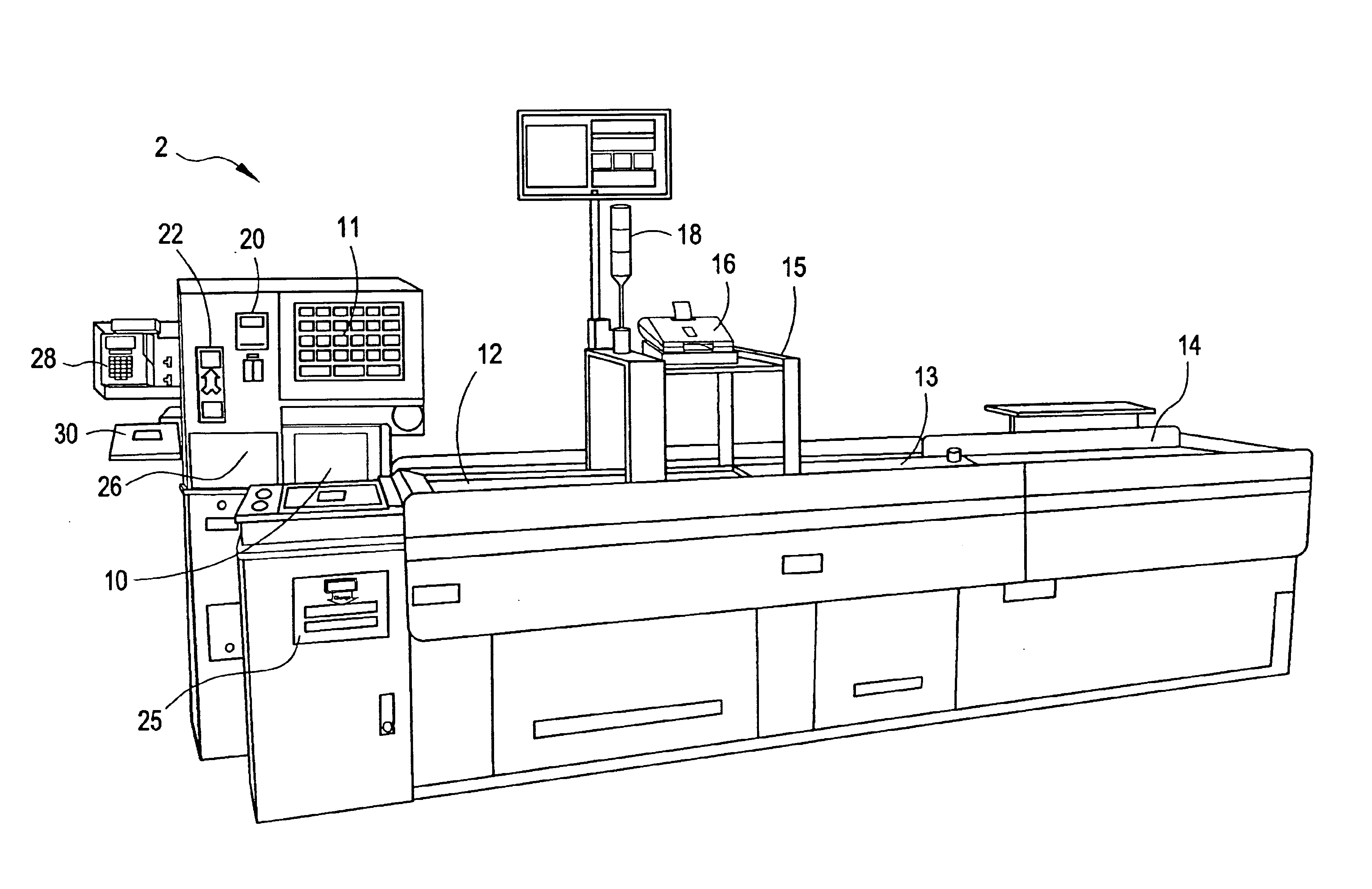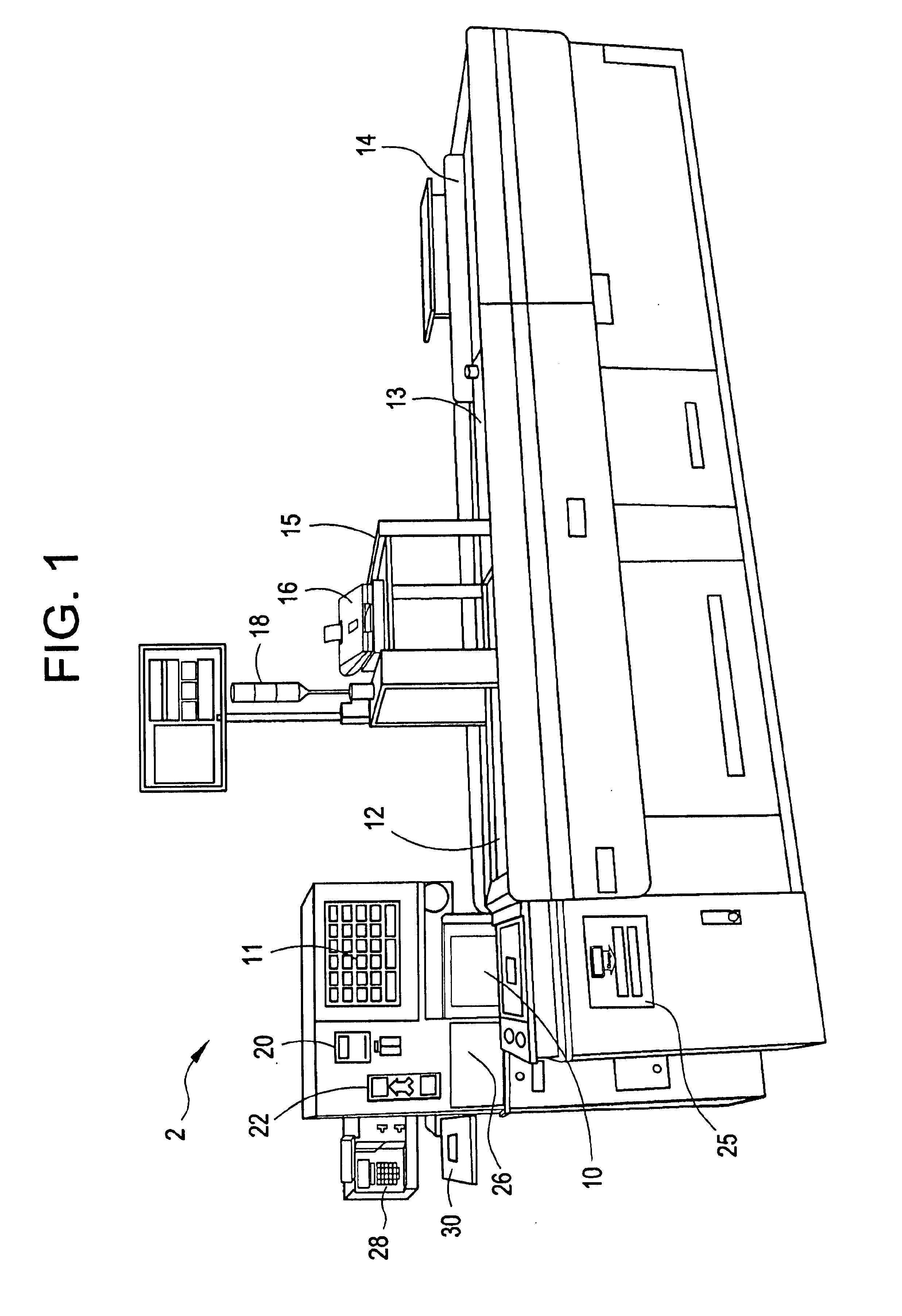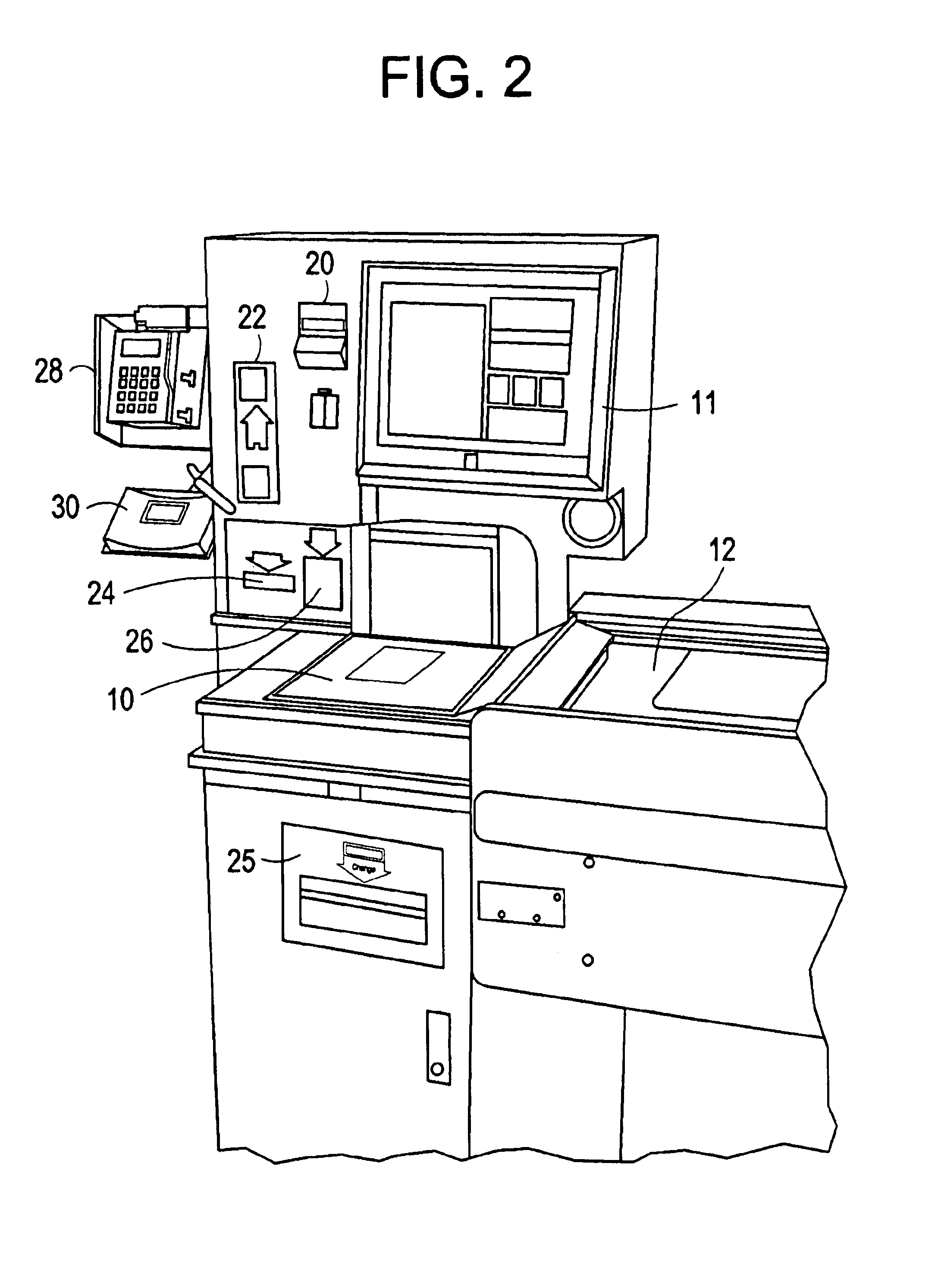Self-checkout apparatus
a self-checkout and checkout technology, applied in the field of self-checkout systems, can solve the problems of collection of coupons, failure of checkout, and failure of checkout on negative comparison
- Summary
- Abstract
- Description
- Claims
- Application Information
AI Technical Summary
Benefits of technology
Problems solved by technology
Method used
Image
Examples
Embodiment Construction
FIGS. 1-3 illustrate a automatic checkout system 2 according to the present invention. The system includes a laser universal product code (UPC) reader 10, a display screen 11 for interactive customer communication and guidance, an entry conveyor 12, an outfeed conveyor 13, a bagging area 14, a security tunnel 15, a receipt unit 16, and a payment indicator light 18.
The present invention is most aptly used with a system which uses a security system (as shown in FIG. 3) utilizing the known weight of each item to protect against consumer fraud. Specifically, most products in a supermarket are provided with identification in the form of the universal product code (UPC) which identifies the product as well as one of its parameters such as size, volume or weight. Size and volume can each be converted by known means into corresponding weight. Thus, reading the UPC label on the product can furnish information as to weight of any product.
Such a system is disclosed in U.S. Pat. No. 4,676,343 (...
PUM
 Login to View More
Login to View More Abstract
Description
Claims
Application Information
 Login to View More
Login to View More - R&D
- Intellectual Property
- Life Sciences
- Materials
- Tech Scout
- Unparalleled Data Quality
- Higher Quality Content
- 60% Fewer Hallucinations
Browse by: Latest US Patents, China's latest patents, Technical Efficacy Thesaurus, Application Domain, Technology Topic, Popular Technical Reports.
© 2025 PatSnap. All rights reserved.Legal|Privacy policy|Modern Slavery Act Transparency Statement|Sitemap|About US| Contact US: help@patsnap.com



